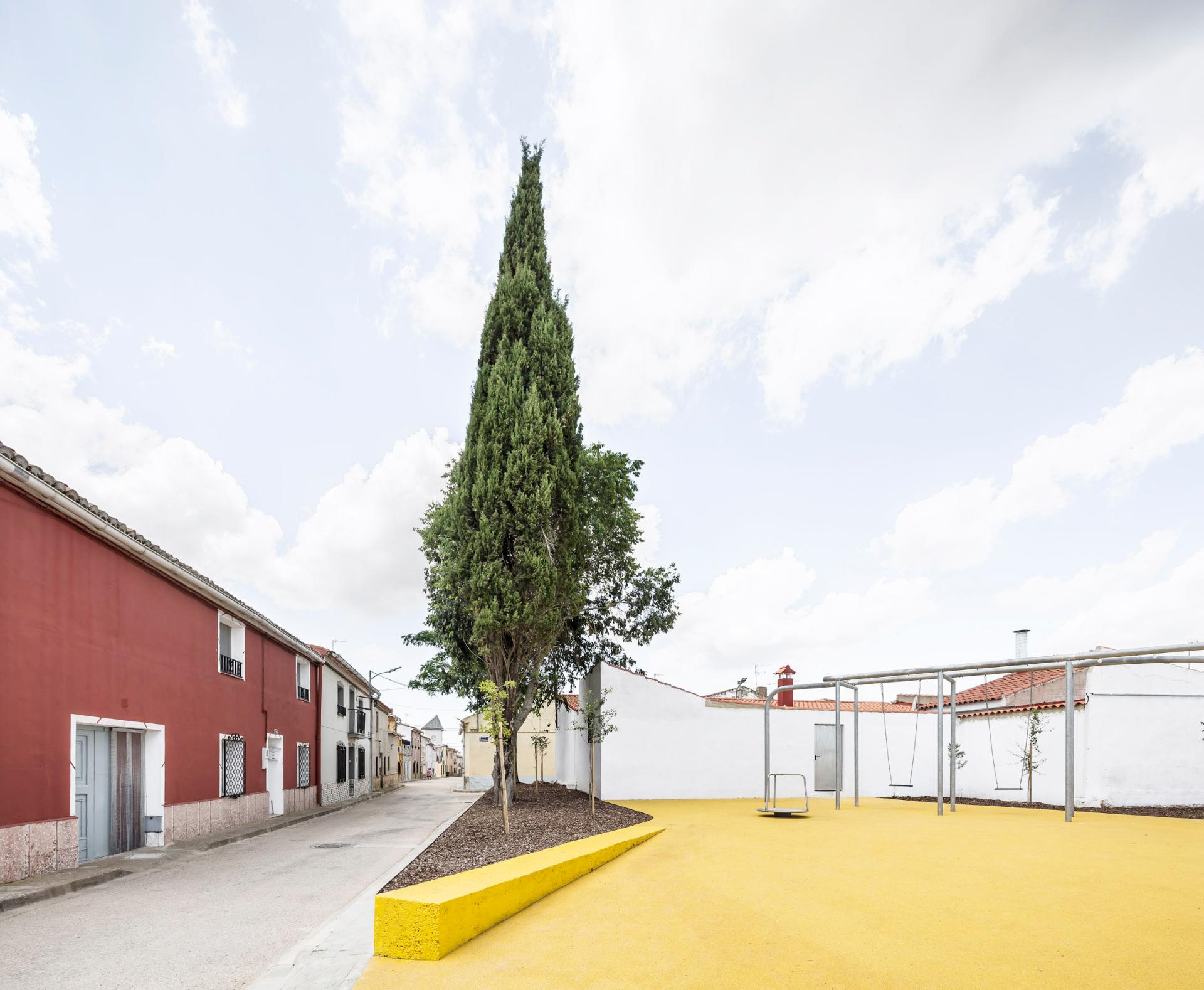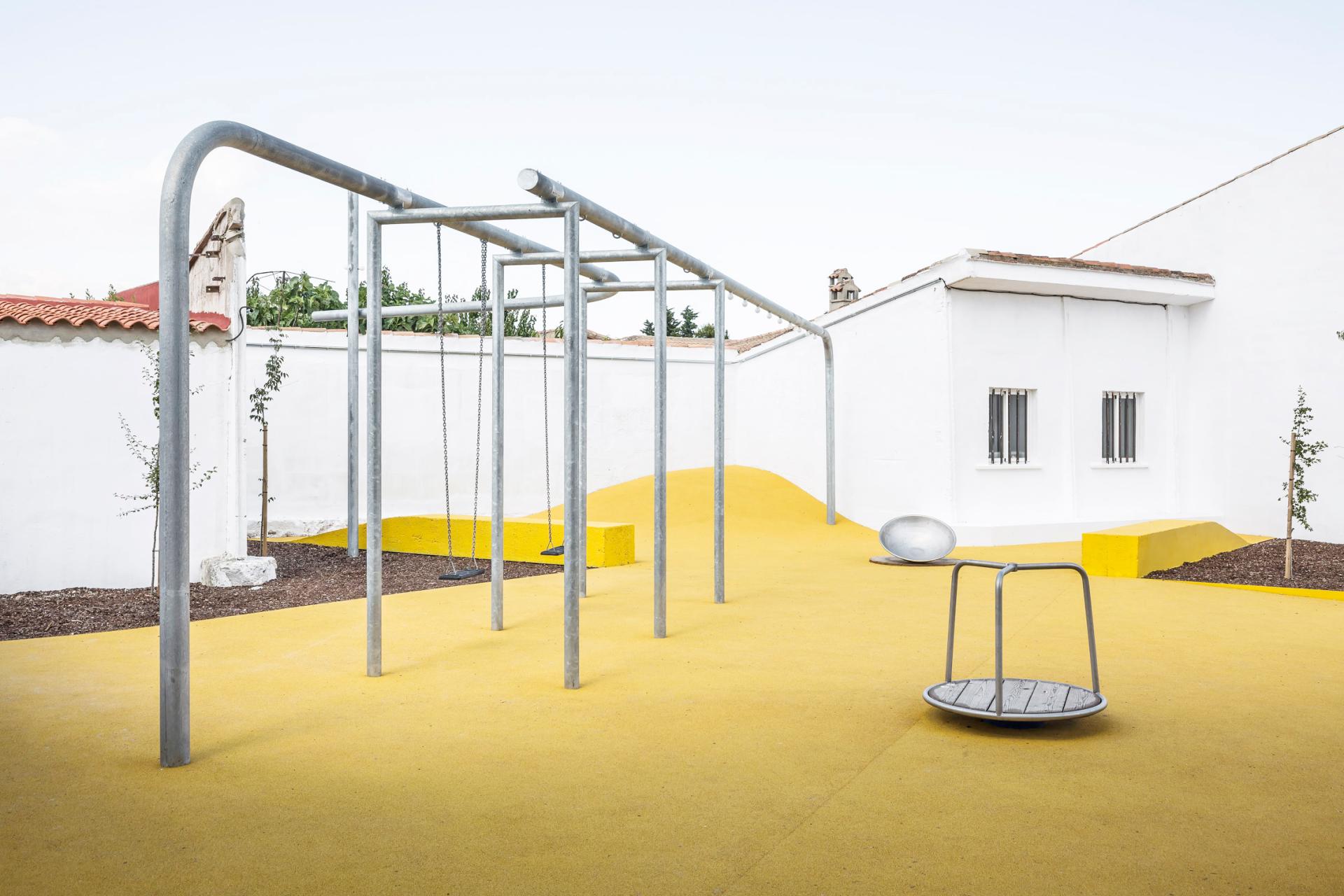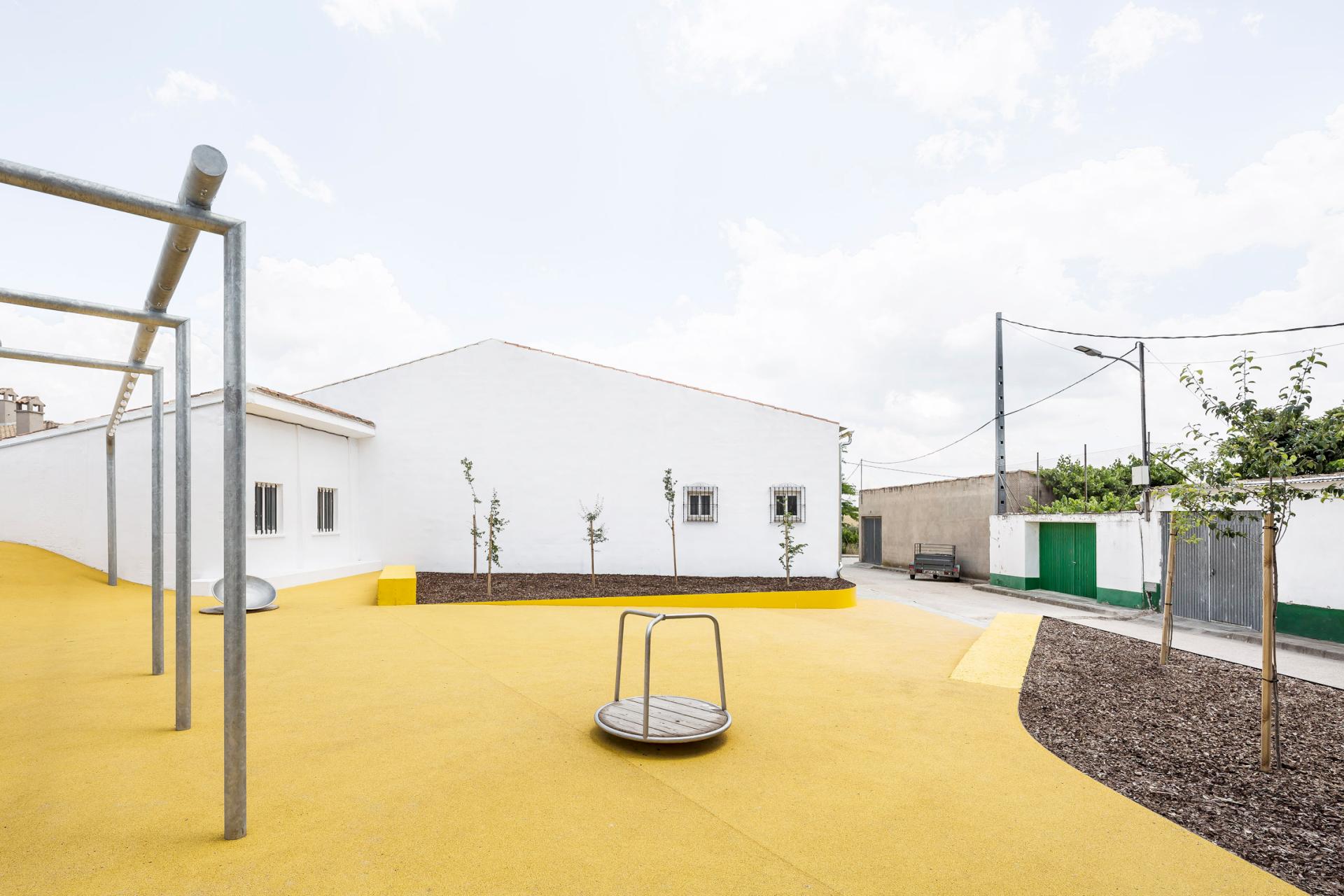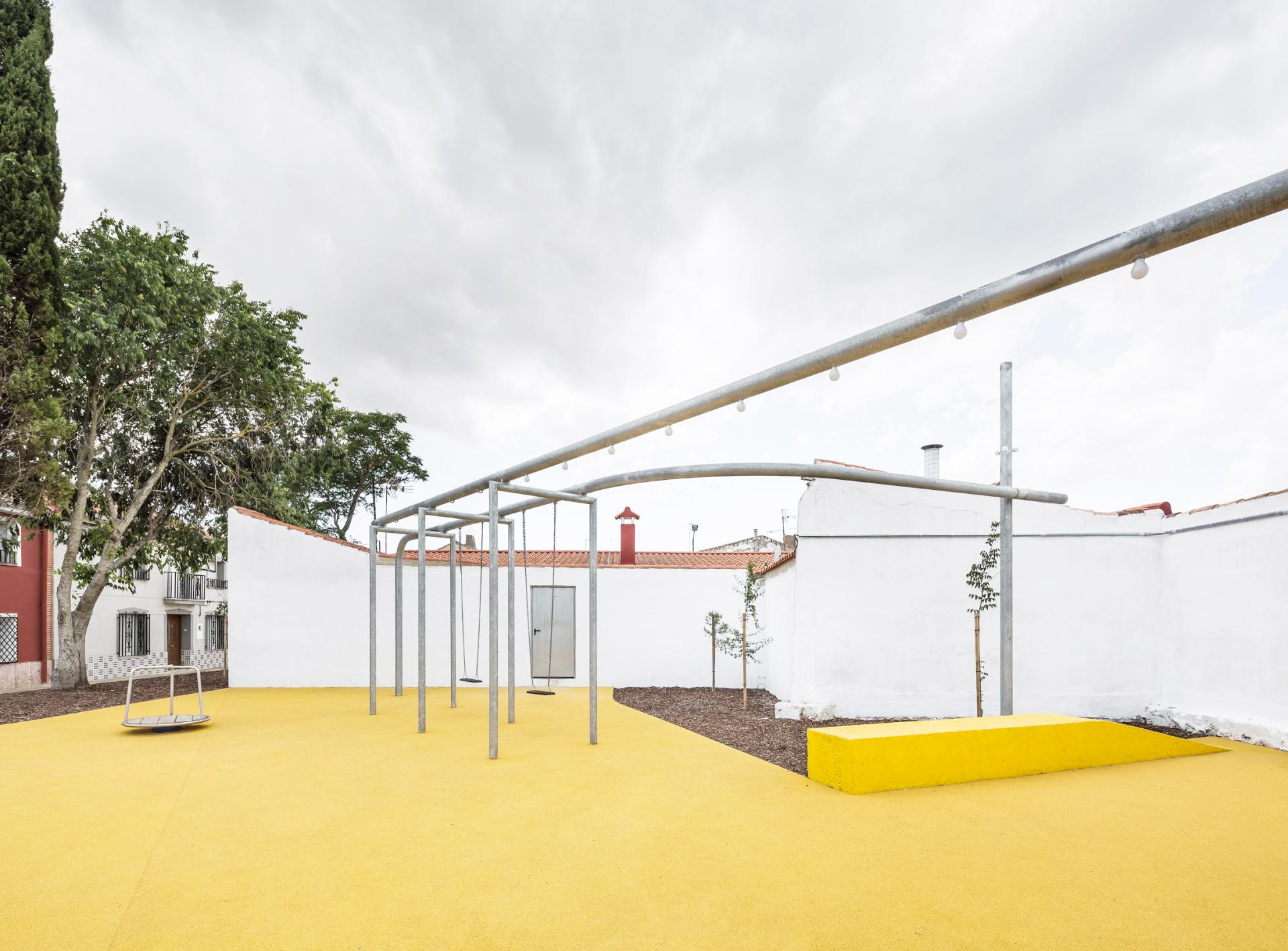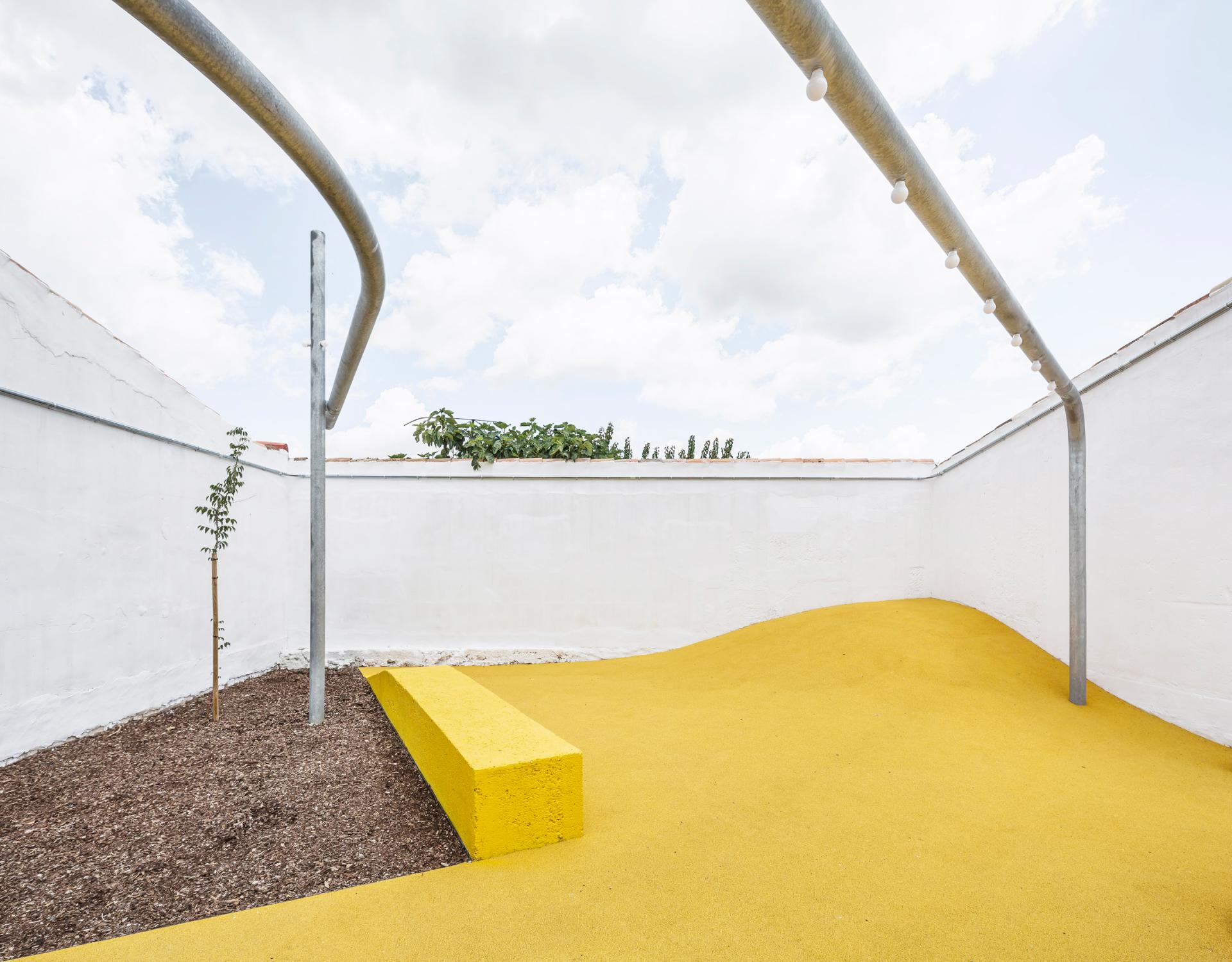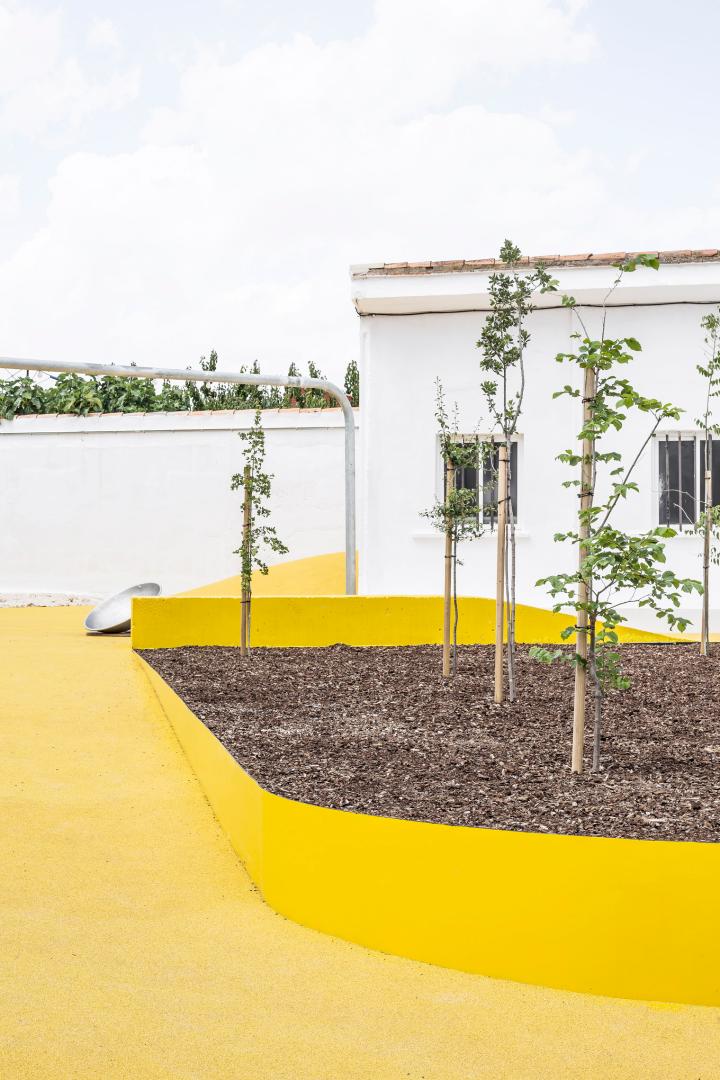A playground for a population of 131
Basic information
Project Title
Full project title
Category
Project Description
This playground is located in Balsa de Ves, a village with a population of 131. It sits on the plot that was once occupied by the school. Demolished in 2019, the building was devoted to multiple uses but education since the school closed in 1972. But still, children remain the target audience, even if children lack in the village. To negotiate this paradox, the elements that shape it have been designed in a deliberately ambiguous way in order to adapt to multiple uses and different ages.
Geographical Scope
Project Region
Urban or rural issues
Physical or other transformations
EU Programme or fund
Which funds
Description of the project
Summary
This playground is located in Balsa de Ves, a village with a population of 131. As such, it is a product of the particular conditions that drive the existence of small and decaying municipalities in Spain, an inevitably ambiguous and paradoxical form of the urban. It sits on the land that was once occupied by the school. Demolished in 2019, the building was devoted to multiple uses but education since the school closed in 1972. But still, children remain the target audience; the playground addresses a segment of the population that lacks in the village. To negotiate this paradox, the elements that shape it have been designed in a deliberately inexact way. The yellow rubber surface extends to the perimeter in order to conceal its usual relation to kid’s playgrounds. Teeter-totters and roundabouts are hard to read. And the swings blend with the light fixtures in a single galvanized steel structure. The playground is vague, uncertain and elastic to accommodate the manifold versions of the future in a place like this.
Key objectives for sustainability
- Use of recycled and low-impact materials: cork and rubber.
- Preservation of existing trees and addition of new trees and vegetation into an abandoned site.
- Attraction of children and families to a village that has lost 50% of its population in the last 20 years.
- Low maintenance and embracement of wear as key elements of the design.
Key objectives for aesthetics and quality
- A soft, continuous topography that extends through the entire surface of the park, making no distinction between staying and playing, and enabling all sorts of activities by children and adults.
- A color swatch that blends with the chromatic patchwork that characterizes the village.
- A playground that includes a few lightbulbs, so it can be used at any time.
- A catchy design that was able to attract public attention to the complex and problematic situation of the shrinking village.
Key objectives for inclusion
- Direct involvement of the small council municipality in all the phases of the design and management of the project.
- Universal design and accessibility of the playground, which intentionally makes no distinction between the areas dedicated to children and adults.
- A budget of 48.000€.
Results in relation to category
Despite its humble scale, the project had significant impact on popular Spanish media (it was covered on the newspaper El País and Castilla-La Mancha’s regional television) and architectural outlets. In addition, it was selected in the 2021 FAD awards and the XV Spanish Architecture Biennial. This impact, indirect to some extent, has turned into a key asset of a renewed sense of belonging for the residents of the village.
How Citizens benefit
In a village of 151 people, there is no clear distinction between neighbors and professionals. In this regard, the casual encounters and sustained suggestions from various neighbors influenced significantly the final design of the playground. An example was the input of Antonio, a local resident who is in charge of a garden center in a nearby village (Villamalea), who suggested tree species and ages different to those included in the initial design, so they could adapt better to the site and the changing climate conditions of the area.
Physical or other transformations
Innovative character
The context of the project turns it into an underground creation: a small, apparently irrelevant village, and a very limited budget. In this context, the usual definition and characteristics of a playground had to be reconsidered, resulting in a different way of understanding this type of urban equipment.
Learning transferred to other parties
In terms of governance and management, the way the project was mobilized and financed can serve as a reference for other villages with similar difficulties.
In terms of design, the blurring of the boundaries between the activities of the playground and the technical solutions used to extend the rubber surface over the entire intervention could be transferred to other projects.

